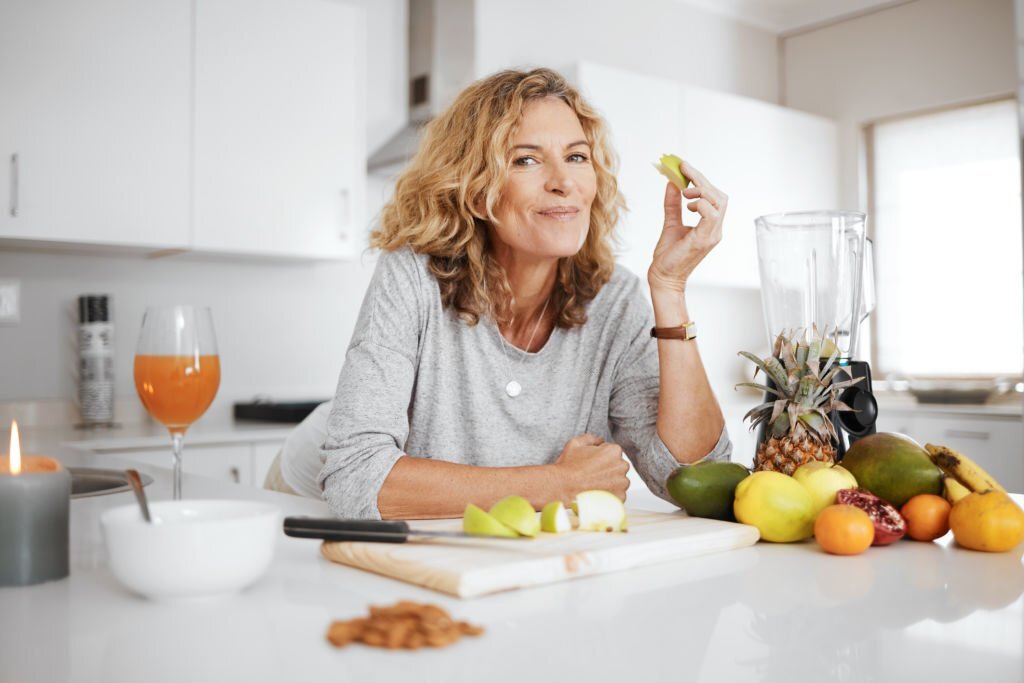There is growing interest in low glycemic index diets: research on obesity points to the role of sugar in disease risk.
Consumed in reasonable quantities, sugar is not bad. Glucose, which is mostly found in sugar, provides the body with the energy it needs.
But over-consumption can be dangerous. Current eating habits tend to put too much sugar into the body. Eating low GI foods helps control this sugar intake.
That's why Oh Oui ! has been designed to offer a range of pastries that are both healthy and tasty, without making any concessions to your health!
Our recipes contain an average of 50% less sugar than traditional pastries, no sweeteners and for each of them, a low glycemic index evaluated by in vitro tests carried out in an approved laboratory.
The flavors are preserved because Oh Oui ! uses unrefined sugars that naturally have a low glycemic index, such as coconut sugar or agave syrup. Usually, the GI of a classic pastry exceeds 70 (Source: Montignac GI table), the Oh Oui ! range has indices below 25 to guarantee a controlled impact on blood sugar levels.
Why adopt a low glycemic index (GI) diet?
👉 Alow GI diet prevents the risk of diabetes and cardiovascular disease.
Why? When we eat a high GI food, our body will try to manage the increase in blood sugar by secreting a hormone: insulin.
Insulin is a hormone produced by the pancreas that regulates blood sugar levels. The higher the glycemic index, the higher the production of insulin.
- Insulin first converts sugar into glycogen in the muscles and liver.
- In a second step, the excess sugar is converted into triglycerides (fats).
Faced with this overexposure to sugar, the body can become exhausted, and certain pathologies can appear. The pancreas gets tired from the massive secretion of insulin; it will have more and more difficulty to fulfill its role. The risks of type 2 diabetes (in case of genetic predisposition) or cardiovascular diseases appear.
On the other hand, a low GI diet does not cause a glycemic peak, and therefore limits these risks of overexposure.
👉 A low GI diet also reduces the risk of risks of obesity
It helps to control weight. By avoiding the transformation of sugar into fat, we avoid gaining weight!
By eating low GI foods, you can control your weight without depriving yourself: unlike some restrictive diets that forbid any sweet or fatty food, a low GI diet allows a wide variety of pleasures!
Foods rich in fiber, in " good fat
A low GI lifestyle does not restrict quantities and therefore avoids any cravings.
👉 Itis also a way to feel in better shape
When you eat a high GI food, the glucose in your blood is regulated by insulin and transformed into reserves in your muscles or into fat. The level of glucose is therefore reduced to zero, and we find ourselves in hypoglycemia, i.e. lack of glucose.
In case of hypoglycemia, we feel tired, weak, with a feeling of hunger and a desire for sweetness, even though we have just consumed some. It's a vicious circle! Thanks to low GI, without excessive insulin secretion, it is possible to break this pattern of repeated sugar cravings.
A low GI diet provides the right amount of energy from protein and fat to keep our bodies (and minds!) in shape longer. Since carbohydrates are digested slowly, they release glucose (energy) in a steady and continuous dose over time.
The low GI diet is therefore particularly interesting for athletes, who need to draw energy for a prolonged effort. Before starting a busy day, avoid high GI foods that will only give you a quick dose of fuel, and choose a low GI meal, which will meet your energy needs all day long, without any sugar cravings...
The low GI diet allows you to limit sudden variations in blood sugar levels, and therefore protects the organs involved in this process. This is why this type of diet is strongly recommended for people with diabetes:
- type 1to better anticipate and control the insulin doses to be injected.
- Type 2to avoid any excess for the body and to preserve as much as possible the organs involved in the glycemia regulation process.
- Gestationalto limit excess glucose in the blood that could lead to complications for the mother and her child.
How to adopt a low GI diet?

Now that we know a little more about the action of sugars, we need to know thata low glycemic index diet requires low GI ingredients!
Committed to the principle of a healthy and good product, the Oh Oui ! team uses sugars that naturally have a low glycemic index, such as agave syrup, coconut sugar or grape sugar. Thus, the GI is reduced and the taste is preserved.
Oh Oui ! uses only wholemeal French flours and legume flours, as well as eggs from free-range hens, in an effort to promote "better eating". The recipes are enriched in fiber with the use of oat bran, wholemeal flours and chicory fiber. The colorants and flavors are natural.
To give you an idea of how foods interact with each other, the GI is added or subtracted:
Ex: A low GI food lowers the total GI of a dish
Ex: A high GI food increases the total GI of a dish.
👉 Choose ingredients rich in fiber
Here are the main things to keep in mind when selecting and combining ingredients:
Fiber is difficult for the body to assimilate and therefore slows down the digestion process. It is therefore a way to slow down the absorption of glucose into the bloodstream, and naturally lower the glycemic index of the meal.
Where are these precious fibers found? In fruits and vegetables, in legumes (chickpeas, lentils), in wholemeal flour.
For example, in our pastries, we optimize the fiber content thanks to the flours. We use wholemeal and semi-wholemeal flour (GI 45 and 65), chickpea flour (GI 35) and oat bran (GI 15). In addition to this selection of flour, we add chicory fiber to our recipes! Our pastries are therefore rich in fiber!
In addition to lowering the GI, these ingredients add a gourmet touch to our recipes: the low GI experience is also the discovery of ingredients that are sometimes forgotten or little used.
Find our summary on the GI of foods
👉 Observe the degree of ripeness of fruits
Carbohydrates are naturally present in fruit, but the riper the fruit, the higher the GI. For example, a banana has a GI of 45, which can rise to 60 if it is very ripe!
This explains why a very ripe fruit gives a higher impression of sweetness. So choose fruit that is just ripe, to enjoy all its flavors and a reasonable GI! At Oh Oui !, in addition to attaching importance to the ripeness of fruit, we follow the seasonality of fruit and offer the seasonal finger which changes regularly ;)
👉 Check thehe degree of processing of food!
The more a food is processed, the more its composition is likely to be modified, and the higher the GI
- For example, the T55 flour that we generally find in stores tends to undergo a lot of processing: after being sifted, we remove the bark of the wheat, and we deprive ourselves of this precious source of fiber: the GI increases to 70. On the other hand, for wholemeal flours, we keep this bark and its fibers: the GI is thus stabilized at 45. We use it for example in our madeleines, to guarantee a low GI.
- In the same way, grinding or pureeing increases the GI: it is better to enjoy potatoes in pieces than in puree, or unmixed vegetables than a creamy soup.
The goal is to cook with the most raw products possible, to understand and control what will make up your meal.
👉 Watch the cooking
Cooking also transforms the composition of the ingredients: under the action of heat, several chemical reactions take place. We are particularly interested in starch.
During cooking, the structure of the starch is similar to that of glucose, and is treated as such by the body.
For example, this explains why the GI of pasta increases from 40 for al dente cooking to 55 for overcooked pasta.
Whenever possible, prefer to cook pasta gently to avoid this modification of the starch. You will also preserve all the vitamins and nutrients of your food. That's why at Oh Oui ! we make sure our shortbread and crumbles are cooked in a controlled manner to ensure a low GI.
👉 Reconcile yourself with fat
Contrary to popular belief, fat can have benefits. In fact, it slows down digestion and therefore the absorption of sugar.
Adding a source of fat to foods can lower the total GI. Note that it is better to choose vegetable fat (olive oil, peanut butter or sunflower seeds), which has a lower GI than animal fat (milk, butter or cream).
Ex: Pasta (GI 50 if wholemeal, GI 70 if conventional) + a dash of olive oil (GI 0) => the total GI decreases thanks to the oil.
How does it work? Oil slows down the absorption of food, and therefore slows down the arrival of carbohydrates in the blood! However, be careful not to overuse it, it's all a question of balance.
You now have all the keys to understanding the GI
But the glycemic index alone is not enough. You have to take into account :
- The speed of absorption of carbohydrates counts (the GI), to predict the impact of glucose on blood sugar.
- The amount of carbohydrate to understand the dose of glucose that will be ingested.
We find these two essential data thanks to the glycemic loadwhich is calculated as follows
GI x amount of carbohydrate = glycemic load (GL)
It's logical: an excessive consumption of carbohydrates, even at low GI, delivers an excessive amount of glucose into the bloodstream. So in addition to monitoring the GI, you need to monitor the amount of carbohydrate you eat. You will find this information on the nutritional values of our products.
For our pastries, all this information is indicated on our website.
Have a good search and above all, enjoy 😊!
Delphine and Fanny











